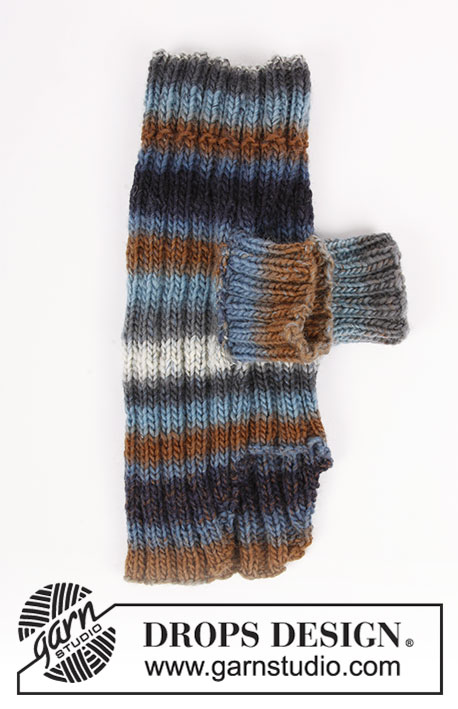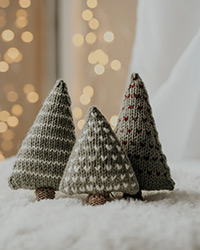Comments / Questions (21)
![]() Rocio wrote:
Rocio wrote:
Sería de mucha ayuda si mostraran imágenes del patrón de frente y de lado con las medidas. Me encantan todos sus diseños, gracias
29.11.2024 - 17:32
![]() Gerda Kielman wrote:
Gerda Kielman wrote:
Ik ben dit patroon aan het breien, maar loop tegen een verschil van 2 steken aan. Op een gegeven moment moet ik bij de boordsteek 80 steken hebben, maar ik heb er 82. Ik heb de beschrijving nagelezen, geteld, en ik kom steeds weer op 82 steken. Doe ik iets verkeerd?
30.06.2024 - 12:18DROPS Design answered:
Dag Gerda,
Als je begint met 64 steken en je breit 2 recht, 2 averecht, waarbij je uiteindelijk alle averechte delen meerdert naar 3 averecht, dan kom je op precies 80 steken. Kan het zijn dat je ergens te veel hebt gemeerderd
30.06.2024 - 20:27
![]() Wendy J Edwards wrote:
Wendy J Edwards wrote:
Thanks for your reply BUT ! The pattern instructions state “at the beginning of each row “ NOT each side !
11.03.2024 - 10:51
![]() Wendy J Edwards wrote:
Wendy J Edwards wrote:
185-35 DOG JUMPER. JUMPER. I now have 87 stitches and am working back and forth. Casting off at the beginning of each row does not work out as 87-55 = 32. Cast off 2 st 2 times =4, 1st 7times =7, 2st 1 time =1, 3st 1 time = 1 total 16 NOT 32 ? Desperately needing help with this PLEASE 🙏
11.03.2024 - 04:52DROPS Design answered:
Hi Wendy, When casting off under the tummy in the largest size, you cast off 2 x 2 stitches on each side = 8 cast-off stitches, then 1 x 7 on each side = 14 stitches, 2 x 1 on each side = 4 stitches and 3 x 1 on each side = 6 stitches . You are then left with 55 stitches on the needle. Hope this helps and happy knitting!
11.03.2024 - 06:47
![]() Lili wrote:
Lili wrote:
Hvorfor skal der strikkes en omgang ret inden udtagninger i halsen? Kan man udlade omgangen med ret?
12.10.2022 - 13:22DROPS Design answered:
Hei Lili. Ved å strikke en omgang rett, får genseren en litt bedre hold mellom hals og resten av genseren. mvh DROPS Design
17.10.2022 - 13:10
![]() Kristina wrote:
Kristina wrote:
När man har stickat färdigt halsen står det i beskrivningen. "Sticka 1 varv rätt över alla maskor.". Vad betyder det? Är rätt förkortning av rätmaskor? Eller är det något annat? För mig är den meningen otydlig.
02.12.2021 - 10:20DROPS Design answered:
Hej Kristina. Ja vi menar att du ska sticka rätmaskor hela det varvet. Mvh DROPS Design
02.12.2021 - 10:44
![]() Nora wrote:
Nora wrote:
A que se reiere "En la siguiente vuelta aumentar en cada 2ª sección de revés de 2 reveses a 3 reveses"
30.09.2021 - 04:47DROPS Design answered:
Hola Nora, mira este video: AQUI. En el video tienes 3 secciones reves y aumentas 1 punto en cada seccion. Aumentar en cada 2ª sección de revés significa que augmentas en primera seccion, no augmentas en segunda, augmentas en tercera, no augmentas en cuarta, etc.). Buen trabajo!
01.10.2021 - 09:53
![]() Claudia Carolina wrote:
Claudia Carolina wrote:
Salve spett.le Drops, grazie mille per i meravigliosi modelli e filati. Non sarebbe possibile avere qualche modello di capottino per cani taglia medio grande? L? grazie ancora
26.07.2021 - 15:23DROPS Design answered:
Buonasera Claudia, al momento non sono previsti nuovi modelli per cani, ma continui a seguirci: pubblichiamo dei nuovi modelli tutti i giorni! Buon lavoro!
26.07.2021 - 18:04
![]() Katia wrote:
Katia wrote:
Salve potrei sapere come aggiungergli le zampe posteriori se è possibile, su quanto modello è possibile? Grazie
15.01.2021 - 08:28DROPS Design answered:
Buongiorno Katia, purtroppo al momento non abbiamo modelli che comprendano anche le zampe posteriori, ma tenga d'occhio il sito: nelle prossime settimane ne verranno pubblicati altri! Buon lavoro!
15.01.2021 - 09:54
![]() Anne Wilkinson wrote:
Anne Wilkinson wrote:
Very easy and very cute! I made for a miniature dachshund puppy & would love to share my photo but am not sure how. LMK if you’re interested in seeing the finished product on the model.
28.12.2020 - 12:48
Paws & Stripes#pawsandstripesdogsweater |
|
 |
 |
Dog’s knitted jumper with rib. Sizes XS - M. The piece is worked in DROPS Big Delight.
DROPS 185-35 |
|
|
INFORMATION FOR THE PATTERN: INCREASE TIP: Increase 1 stitch in a purl section by picking up a loop between 2 stitches in the transition between purl and knit. Purl the loop twisted to avoid a hole. The increased stitch is subsequently purled. ---------------------------------------------------------- JUMPER: The piece is worked in the round with double pointed needles/circular needle from the neck and down towards the front legs. Then the piece is divided for the legs; the back and chest pieces are continued separately, back and forth. Then you work in the round down the body and finish by working back and forth towards the tail. The legs are worked in the round with double pointed needles. The whole jumper is worked in rib - it will look small, but is very stretchy. Cast on 48-64-80 stitches with double pointed/circular needle size 4 mm and Big Delight. Work rib (= knit 2 / purl 2) for 4-6-8 cm. Knit 1 round over all stitches. On the next round increase in every other purl section from purl 2 to purl 3 - read INCREASE TIP = 54-72-90 stitches. REMEMBER THE KNITTING TENSION! Continue rib until the piece measures 6-10-14 cm, now increase the remaining purl sections from purl 2 to purl 3 = 60-80-100 stitches. Continue with rib (= knit 2 / purl 3) until the piece measures 8-12-16 cm. Now divide for the front legs, work the next round in rib as follows: cast off the first 2 stitches, work the next 13-18-23 stitches and then place them on 1 thread (= mid under chest), cast off the next 2 stitches, work the remaining 43-58-73 stitches (= back piece). BACK PIECE: = 43-58-73 stitches. Continue to work rib back and forth over these stitches for 5-8-10 cm from the division (the piece measures a total of 13-20-26 cm). Place the stitches on 1 thread. CHEST PIECE: Place the 13-18-23 stitches from under the chest back on the needle and continue rib for 5-8-10 cm (the piece measures a total of 13-20-26 cm). JUMPER: Place all the stitches on the same needle and, at the same time, cast on 2 new stitches in each side between the chest and back pieces = 60-80-100 stitches. Continue rib as before. When the piece measures 20-28-35 cm cast off the middle 9-10-13 stitches mid under chest and continue working back and forth = 51-70-87 stitches. Continue to cast off at the beginning of each row as follows: Cast off 2 stitches 2 times and 1 stitch 2-5-7 times, 2 stitches 1 time and 3 stitches 1 time. Then cast off the remaining 29-42-55 stitches with knit over knit and purl over purl. The piece measures approx. 25-35-44 cm. LEG: Knit up 28-40-48 stitches with double pointed needles size 3 mm around the one leg opening. Work rib (= knit 2 / purl 2) for 4-6-7 cm, cast off with knit over knit and purl over purl. Repeat around the other leg opening. |
|
Have you finished this pattern?Tag your pictures with #dropspattern #pawsandstripesdogsweater or submit them to the #dropsfan gallery. Do you need help with this pattern?You'll find 22 tutorial videos, a Comments/Questions area and more by visiting the pattern on garnstudio.com. © 1982-2025 DROPS Design A/S. We reserve all rights. This document, including all its sub-sections, has copyrights. Read more about what you can do with our patterns at the bottom of each pattern on our site. |
|

































































Post a comment to pattern DROPS 185-35
We would love to hear what you have to say about this pattern!
If you want to leave a question, please make sure you select the correct category in the form below, to speed up the answering process. Required fields are marked *.